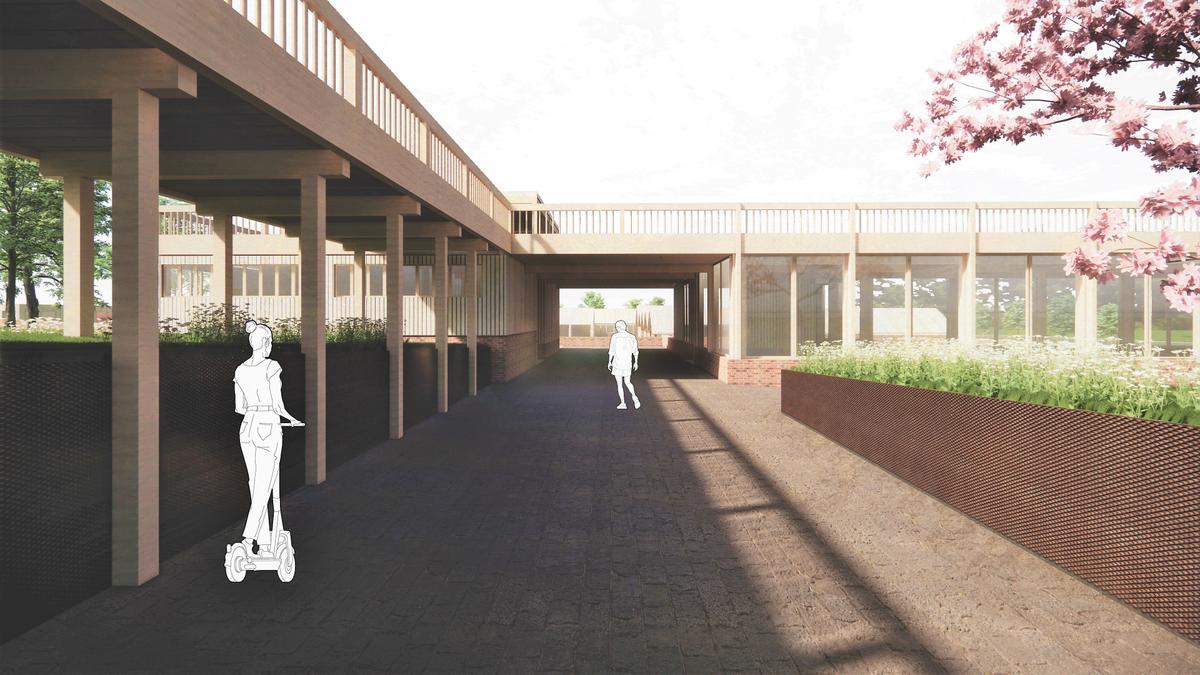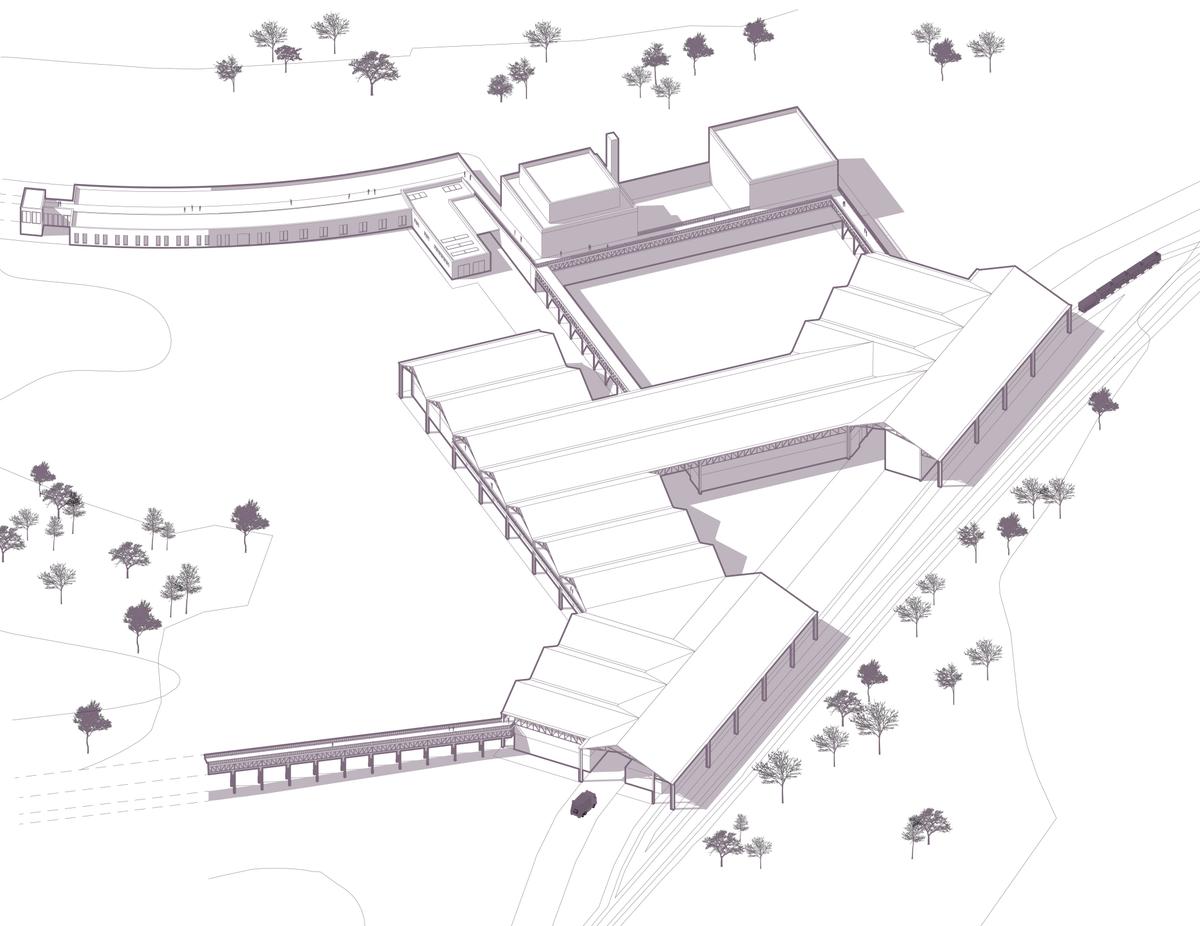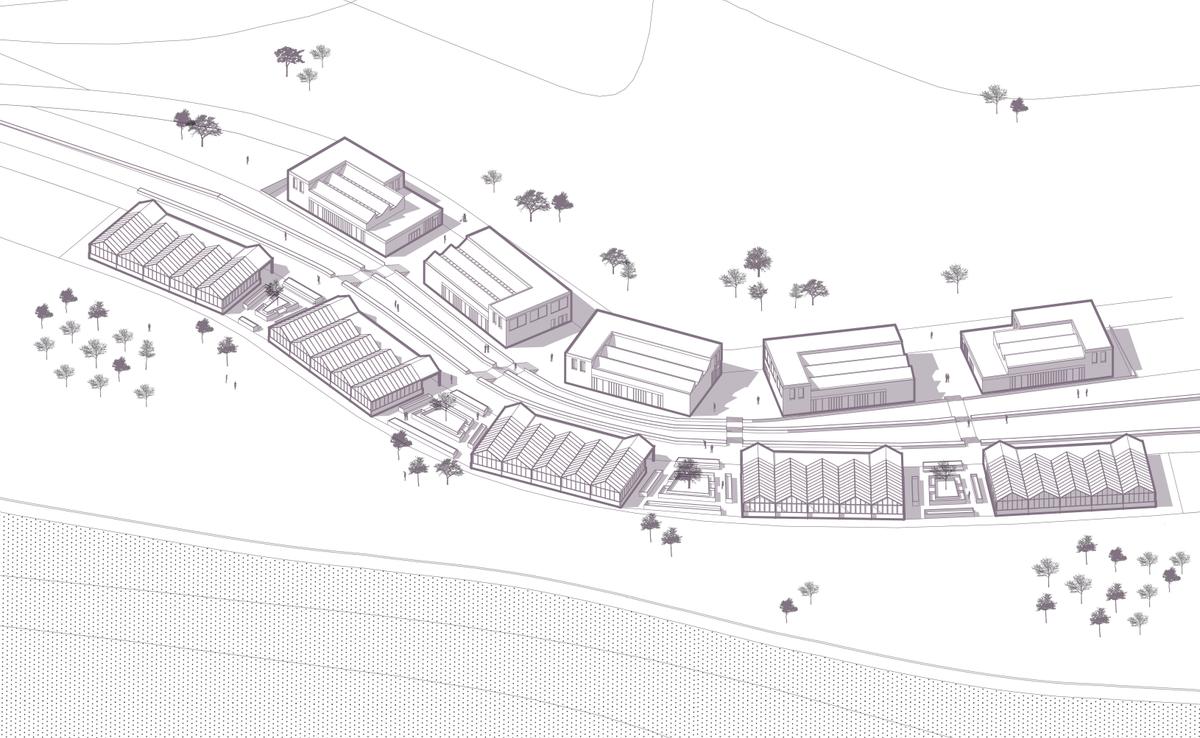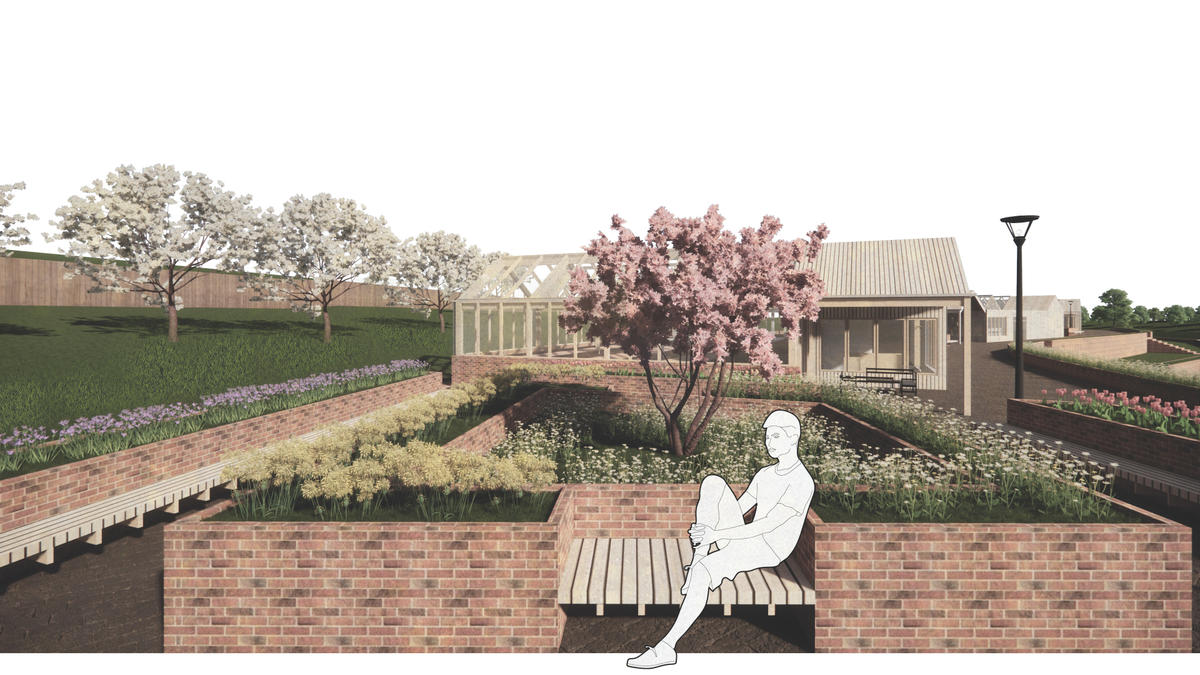Carla Feraru
TRASH TO TREASURE: The story of Kilgarth Triangle and its transformation






View towards the tour reception building
This thesis imagines a new industry for the 21st century: ‘waste mining’ to remediate historic landfills and societal unsustainable consumption and disposal practices.
School/Level
Category
Year
Since the Industrial Revolution, overconsumption has led to an accelerated rate of residual waste production. This, in turn, led to an increased strain on the waste management system, whose strategy was to rely more and more on the practice of landfilling, forever burying discarded resources that our society was unwilling or incapable of giving a second life. The Zero Waste ambitions Scotland put forward in the past years have shined a light on the negative environmental and economic impacts of trapping resources in landfills, but given a lack of proper infrastructure, landfills are still widely used to process residual waste streams. There is a great opportunity to address the shortage in sustainable and efficient infrastructure that deals with current and future waste streams to stop valuable resources from being trapped in landfills in the future, as well as to shine a light on past landfills, not only to remediate them and eliminate their environmental impact but also to acknowledge them as useful resource reservoirs, waiting silently to be tapped into and to be reintroduced into the economy. Kilgarth Triangle, the location of Kilgarth Landfill is imagined as Scotland’s first Resource Mining Park. The masterplan follows a village-like typology, where a collection of buildings of various scales and functions are symbiotically employed across the site.